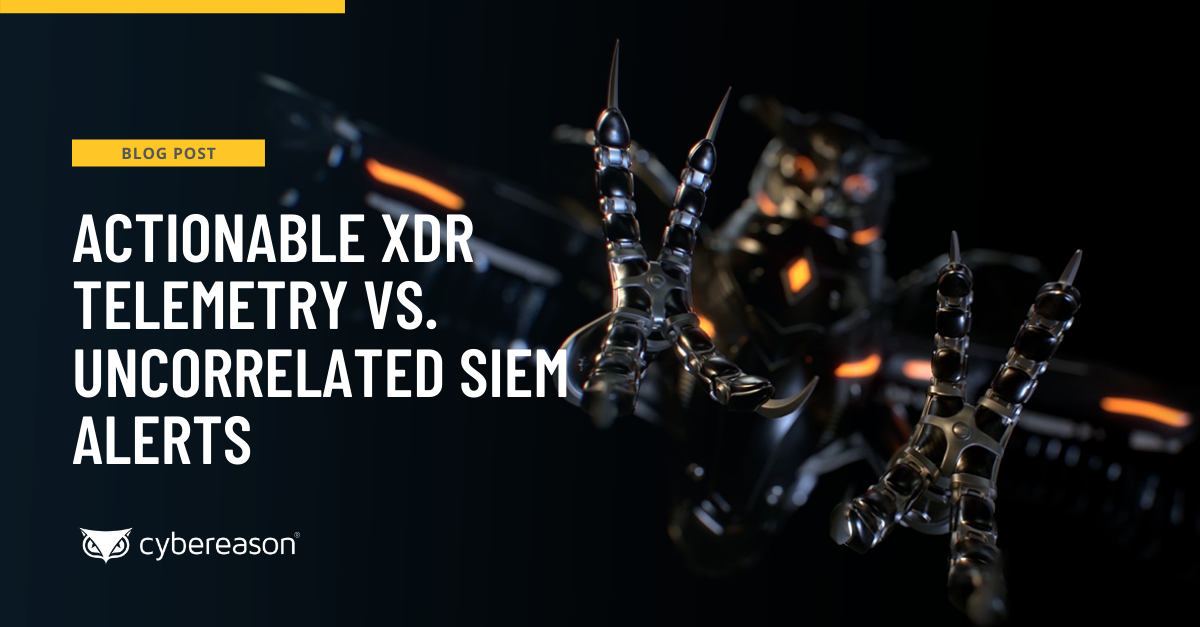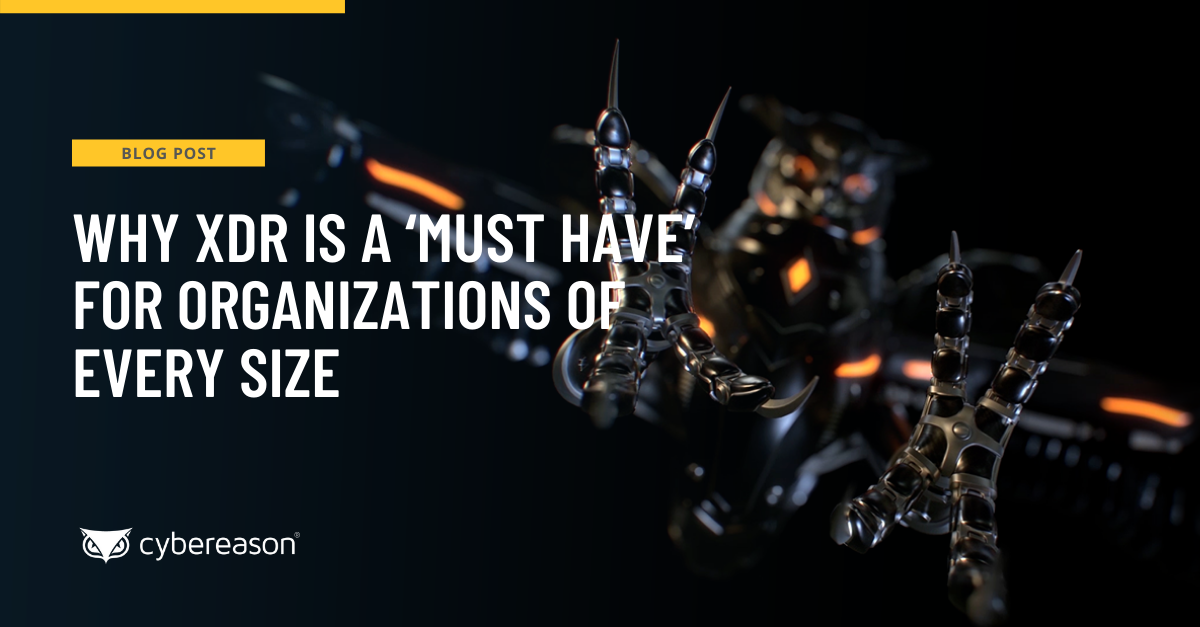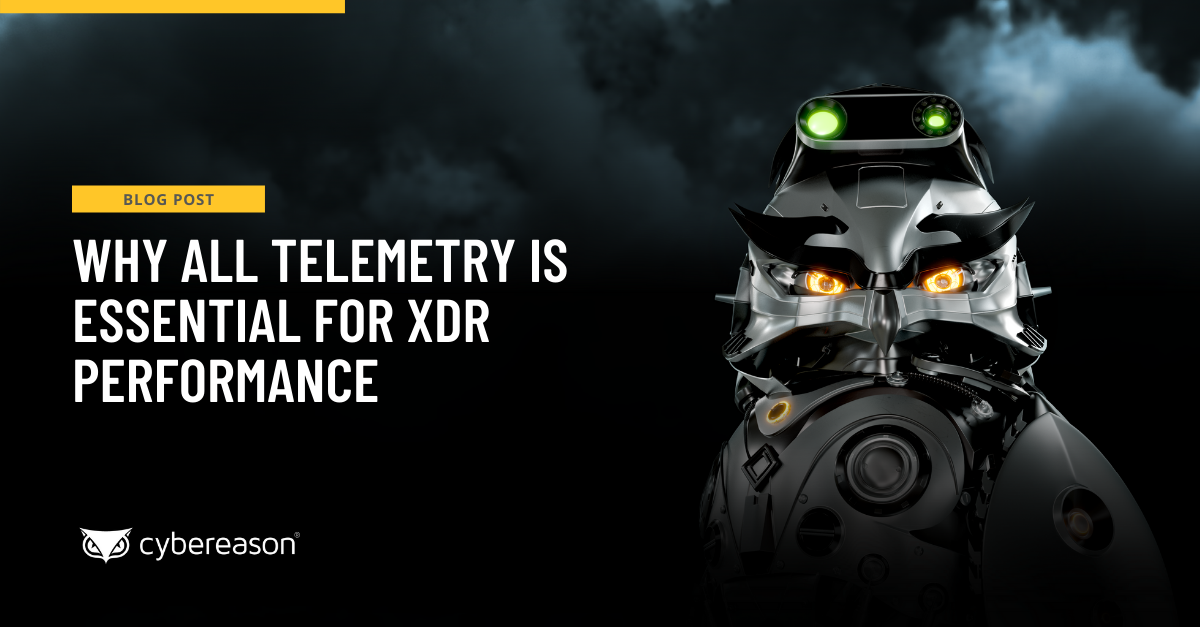According to Grand View Research, the global Extended Detection and Response (XDR) market is expected to reach $2.06 billion by 2028 after climbing at a CAGR of 19.9% over seven years. This forecast is predicated on market optimism that XDR will enable organizations to navigate a growing number of integrations between new and existing security solutions, as well as the notion that security teams can use XDR to increase their visibility across disparate but critical assets to detect and arrest attacks earlier.
Those assumptions aren’t wrong, as XDR extends the capabilities of Endpoint Detection and Response (EDR) beyond endpoints to include user personas, application suites, cloud workloads and more. XDR is rooted in a security strategy which emphasizes the deployment of continuous monitoring and automated remediation capabilities across all network associated assets.
It does this by taking the telemetry from multiple sources and automatically correlating them with event details for cloud workstations, Internet of Things (IoT) devices, network traffic flows, and/or other streams of security data that can enrich advanced behavioral detections to uncover malicious activity sooner. By integrating all telemetry from the security stack in this way, XDR allows security teams to gain comprehensive visibility of potential threats in their organization’s infrastructure before an attack can become a major security incident.
Some organizations might not be convinced they need XDR yet, however. They might be wondering whether XDR is only for those with a large security budget or exceptionally mature security programs. They might be questioning whether it’s worth it for them to invest in XDR now or in the near future. For those skeptical of XDR, let’s dig a little deeper.
Everything Else Move Aside: The Business Benefits of XDR
XDR isn’t the first type of security technology that’s attempted to perform these aggregated security functions. As an example, Security Orchestration, Automation and Response (SOAR) platforms have sought to help security teams to streamline their detection and response processes. But the skill needed to deploy those platforms often exceeds organizations’ internal expertise, wrote Dark Reading, not to mention the fact that they can be expensive to set up.
The challenges with SOAR don’t end there, either. Those tools tend to generate too many false positives and alerts, thereby creating alert fatigue and forcing security teams to waste their resources on investigating false alarms. With SIEM tools, analysts often find themselves deluged by a flood of security alerts with no actionable insights, so security personnel need to investigate each one despite the fact that the majority of those alerts don’t track back to an actual security issue.
Those false positives end up wasting analysts’ time, contributing to a state of alert fatigue in which an organization’s entire security posture suffers as analysts remain bound to manual processes that pull them away from other important security projects.
By contrast, XDR provides SOAR-like functionality for automating response actions, but it does so at a fraction of a cost. What’s more, many XDR solutions allow security teams to automate built--in policy-based remediation actions. This reduces the number of manual steps that security teams need to perform to remediate an incident, which reduces the internal expertise required by organizations to maximize their investments.
It’s a similar story with EDR. As we noted in a previous blog post, EDR is a step-up from traditional antivirus and NextGen anti-malware solutions, but EDR fails to provide comprehensive protection in that its scope is limited to endpoints only. Attacks might have focused on infecting only endpoint devices years ago, but that’s not the case with today’s advanced campaigns. These operations target endpoints as well as non-endpoint assets to move laterally across the network and exfiltrate sensitive information. Because it’s focused on endpoints, EDR can’t detect all this malicious activity in a timely manner.
That explains why organizations are turning to XDR, because it automates event data correlations across key assets along with what's happening on the endpoint. Hence, analysts can gain a more comprehensive picture of what security threats are confronting their systems in real-time. XDR collects all pertinent telemetry, uses AI to analyze it and add actionable context, then allows for true automation of responses across endpoints, on-prem and cloud workloads, user identities and more.
The Cybereason Advanced XDR Advantage
Cybereason enables organizations to embrace an operation-centric approach to security because other solutions limit critical data collected because they can’t process or store it. AI-driven Cybereason XDRis designed to collect and analyze 100% of event data in real-time, processing more than 23 trillion security-related events per week, with absolutely no “dumb filtering.” This allows customers to improve their detection and response intervals by 93%.
The Cybereason XDR Platform comes with dozens of out-of-the-box integrations and is designed to provide visibility organizations require to be confident in their security posture across all network assets, and delivers the automated responses to halt attack progressions, eliminating the need for both SIEM and SOAR solutions. Organizations can enjoy these benefits whether they drop their SIEM and SOAR entirely or augment it with Cybereason Advanced XDR.
Cybereason is dedicated to teaming with defenders to end attacks on the endpoint, across the enterprise, to everywhere the battle is taking place. Learn more about aI-driven Cybereason XDR here or schedule a demo today to learn how your organization can benefit from an operation-centric approach to security.





